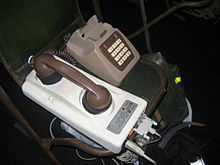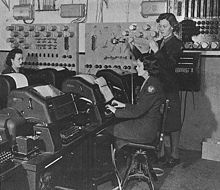My
opinion is that the internet is overpriced. I pay $75 per month from
Telecom, for 40Gb of data, and a landline. I don't need 40Gb, only 2-3
Gb. The cost should be $30 ($29.95) per month. The Commerce Commission
has said Chorus should
charge about $10 per month. I agree, although they could make profits at
a lot less. Also the speed. Copper lines can easily handle all the
speed I need. I do not need "superfast". If I use a web camera for
Skype- which I don't need to, and it goes too fast, I simply go through
more data, which I don't need.
Some of this may be none of your concern, however let me point out a few historical facts.
A modem (modulator-demodulator) is a device that modulates an analog carrier signal to encode digital information and demodulates the signal to decode the transmitted information. The goal is to produce a signal that can be transmitted easily and decoded to reproduce the original digital data. Modems can be used with any means of transmitting analog signals, from light emitting diodes to radio. The most familiar type is a voice band modem that turns the digital data of a computer into modulated electrical signals in the voice frequency range of a telephone channel. These signals can be transmitted over telephone lines and demodulated by another modem at the receiver side to recover the digital data.

Modems can be used with any means of transmitting analog signals, from light emitting diodes to radio. The most familiar type is a voice band modem that turns the digital data of a computer into modulated electrical signals in the voice frequency range of a telephone channel. These signals can be transmitted over telephone lines and demodulated by another modem at the receiver side to recover the digital data.
I did my basic programming there and helped to "modify" the primary software. Some of the terminals were outdated even then, only old "teletype" machines.
BASIC (an acronym for Beginner's All-purpose Symbolic Instruction Code) is a family of general-purpose, high-level programming languages whose design philosophy emphasizes ease of use.
In 1964, John G. Kemeny and Thomas E. Kurtz designed the original BASIC language at Dartmouth College in New Hampshire. They wanted to enable students in fields other than science and mathematics to use computers. At the time, nearly all use of computers required writing custom software, which was something only scientists and mathematicians tended to learn how to use.
Versions of BASIC became widespread on microcomputers in the mid-1970s and 1980s. Microcomputers usually shipped with BASIC, often in the machine's firmware. Having an easy-to-learn language on these early personal computers allowed small business owners, professionals, hobbyists, and consultants to develop custom software on computers they could afford.
BASIC remains popular in many dialects and in new languages influenced by BASIC, such as Microsoft's Visual Basic. In 2006, 59% of developers for the .NET Framework used Visual Basic .NET as their only programming language.
During the 1960s faster and more affordable computers, still mainframes, became available, and time-sharing—a technique which allows multiple users or processes to share use of the CPU and memory—was developed. In such a system the operating system gives each of several processes time on the CPU, then pauses it and switches to another; each process behaves as if it had full use of the computer, although the time to complete its operation increases. Time-sharing was initially used to allow several batched processes to execute simultaneously.
Time-sharing also allowed several independent users to interact with a computer, working on terminals with keyboards and teletype printers, and later display screens. Computers were fast enough to respond quickly to each user.
The need to optimize interactive time-sharing, using command line interpreters and programming languages, was an area of intense research during the 1960s and 1970s.
The BASIC language was also central to the HP Time-Shared BASIC system in the late 1960s and early 1970s, where the language was implemented as an interpreter. Also at this time it was ported into the Pick operating system where a compiler renders it into "pseudo" instruction code, able to be interpreted by a virtual machine.
During this period a number of simple computer games were written in BASIC, most notably Mike Mayfield's Star Trek. A number of these were collected by DEC employee David H. Ahl and published in a newsletter he compiled. He later collected a number of these into book form, "101 BASIC Computer Games", which was first published in 1973.[4][5] During the same period, Ahl was involved in the creation of a small computer for education use, an early personal computer. When management refused to support the concept, Ahl left DEC in 1974 to found the seminal computer magazine, Creative Computing. The book remained popular, and was re-published on several occasions.
In 1975 MITS released Altair BASIC, developed by Bill Gates and Paul Allen as the company Micro-Soft,[8] which eventually grew into corporate giant Microsoft. The first Altair version was co-written by Gates, Allen, and Monte Davidoff.
When the Apple II, PET 2001 and TRS-80
were all released in 1977, all three had BASIC as their primary
programming language and operating environment. Upon boot, a BASIC
interpreter in immediate mode was presented, not the command line interface used later. Commodore Business Machines included a version of Micro-Soft BASIC. The Apple II and TRS-80 each had two versions of BASIC, a smaller
introductory version introduced with the initial releases of the
machines and a more advanced version developed as interest in the
platforms increased. As new companies entered the field, additional
versions were added that subtly changed the BASIC family. The Atari 8-bit family had their own Atari BASIC that was modified in order to fit on an 8 kB ROM cartridge. Source: http://en.wikipedia.org/wiki/BASIC
A teleprinter (teletypewriter, Teletype or TTY) is an electromechanical typewriter that can be used to send and receive typed messages from point to point and point to multipoint over various types of communications channels. They were adapted to provide a user interface to early mainframe computers and minicomputers, sending typed data to the computer and printing the response. Some models could also be used to create punched tape for data storage (either from typed input or from data received from a remote source) and to read back such tape for local printing or transmission.

Teleprinters have largely been replaced by fully electronic computer terminals which usually use a computer monitor instead of a printer (though the term "TTY" is still occasionally used to refer to them, such as in Unix systems). Teleprinters are still widely used in the aviation industry (AFTN and airline teletype system), and variations called Telecommunications Devices for the Deaf (TDDs) are used by the hearing impaired for typed communications over ordinary telephone lines.
Most teleprinters used the 5-bit Baudot code (also known as ITA2). This limited the character set to 32 codes (25 = 32). One had to use a "FIGS" shift key to type numbers and special characters. Special versions of teleprinters had FIGS characters for specific applications, such as weather symbols for weather reports. Print quality was poor by modern standards. The Baudot code was used asynchronously with start and stop bits: the asynchronous code design was intimately linked with the start-stop electro-mechanical design of teleprinters. (Early systems had used synchronous codes, but were hard to synchronize mechanically). Other codes, such as ASCII, Fieldata and Flexowriter, were introduced but never became as popular as Baudot.
In addition to the 5-bit Baudot code and the much later seven-bit ASCII code, there was a six-bit code known as the TTS code (Teletypesetter)[28] used by news wire services. Through the use of "shift in" and "shift out" codes, this six-bit code could represent a full set of upper and lower case characters, digits, symbols commonly used in newspapers, and limited typesetting instructions such as "flush left" or "center". A Model 20 Teletype machine with a punch ("reperforator") was installed at subscriber newspaper sites. Originally these machines would simply punch paper tapes and these tapes could be read by a tape reader attached to a Linotype machine, creating type for printing in newspapers and magazines. In later years the incoming 6-bit current loop signal was coupled directly into a minicomputer or mainframe for storage, editing, and eventual feed to a phototypesetting machine.